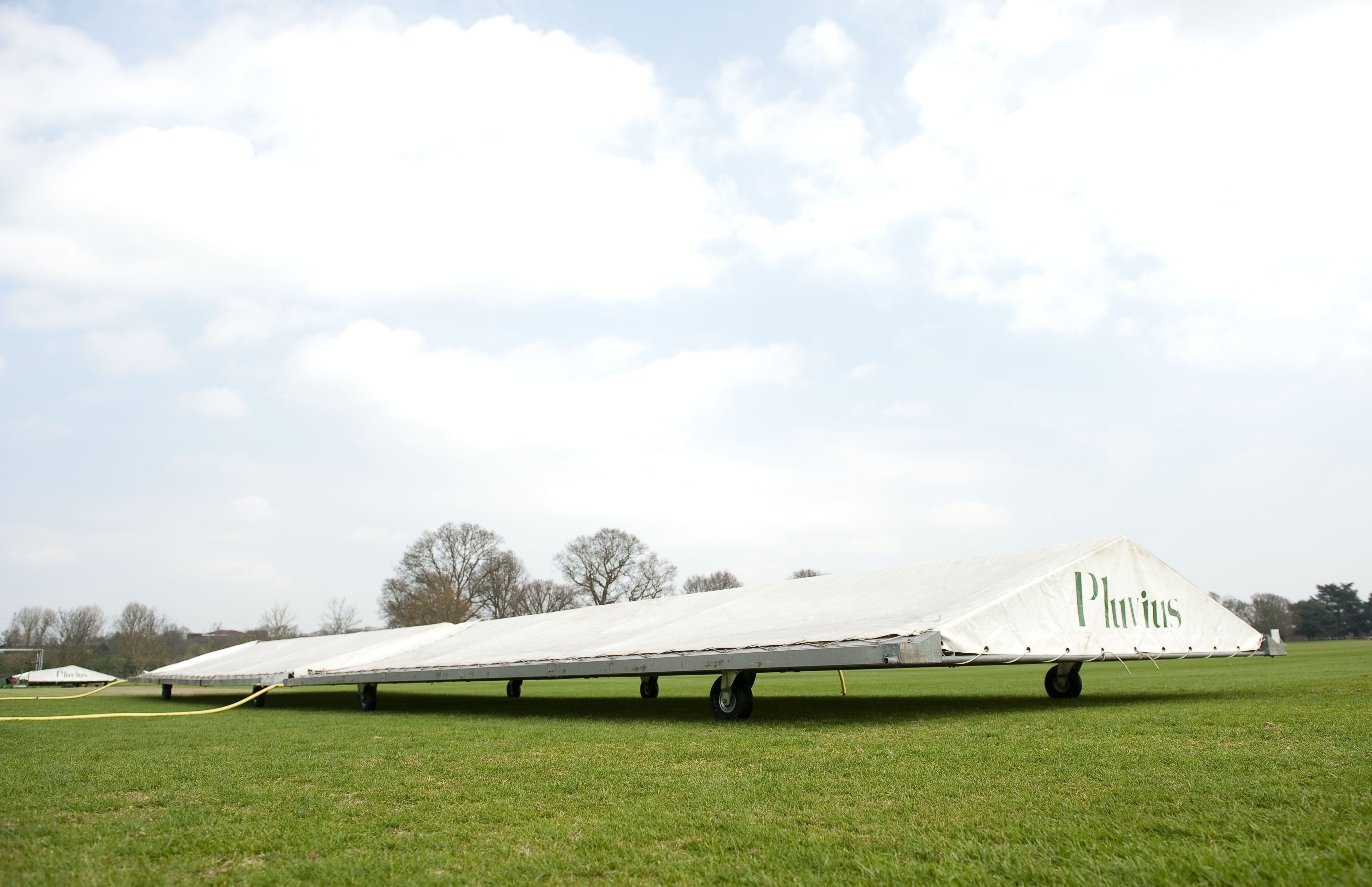Cricket squares should be raised slightly above the outfield to stop water running onto the square from the outfield and sloped slightly to help water to shed off the square. If you have a steeply sloping outfield or your square is sitting low relative to the outfield you will have probably experienced water running on to your square.
Many squares have a cross-fall/slope that encourages water to run under covers causing a wet pitch, even though it may be protected from the rain falling on to it.
If you are using more than one flat sheet cover next to another one always make sure you provide an overlap (usually at least 300 mm /1 ft, some will lap by one peg hole spacings width so that the covers can be pegged together) and make sure that the upslope cover is lapped over the downslope cover (like a roof tile) otherwise water will flow from one cover under the other.
You can further help to prevent run-on by:
- forming a bund or barrier under a flat sheet next to the pitch cover using something like and old section of flexible drainpipe or similar material,
- rolling up the edges of the sheet or by attaching side sheets to the gutters of mobile covers.
Alternatively, and especially where side sheets are not used, strips of adjoining metal called a ‘run-bund’ may be hammered into the soil along the edge of a pitch to provide a physical barrier. A bit of trial and error is required but you can often find a way of reducing the run under.
It is important to securely peg and even ballast covers with sand bags, planks or similar to help hold down the covers in high wind to stop water getting under the covers. This applies to mobile covers too (hooking side sheets on to the mobile covers can help anchor them)


 Tweet
Tweet